Mostrar el registro sencillo del ítem
Two Fossil Fuel Producers in the Face of Climate Change: Mexico and the United States
| dc.provenance | El documento original impreso/digital se encuentra en resguardo del Centro de Investigaciones sobre América del Norte de la Universidad Nacional Autónoma de México. Proyecto CISAN, Memoria Institucional | |
| dc.rights.license | https://ru.micisan.unam.mx/normatividad/TerminosLibreUso_MiCISAN.pdf | |
| dc.creator | Antal, Edit | |
| dc.date.accessioned | 2025-05-03T00:58:44Z | |
| dc.date.available | 2025-05-03T00:58:44Z | |
| dc.date.issued | 2022 | |
| dc.identifier.issn | 0186-9418 | |
| dc.identifier.uri | https://ru.micisan.unam.mx/handle/123456789/1555 | |
| dc.format | application/pdf | |
| dc.format.extent | p. 41-44 | |
| dc.language.iso | eng | |
| dc.publisher | Universidad Nacional Autónoma de México, Centro de Investigaciones sobre América del Norte | |
| dc.relation.isformatof | ||
| dc.relation.requires | Adobe Acrobat | |
| dc.title | Two Fossil Fuel Producers in the Face of Climate Change: Mexico and the United States | |
| dc.rights.holder | Universidad Nacional Autónoma de México, Centro de Investigaciones sobre América del Norte | |
| dc.audience | Estudiantes | |
| dc.audience | Maestros | |
| dc.audience | Investigadores | |
| dc.audience | Otros públicos | |
| dc.audience | Medios de comunicación | |
| dc.coverage.placeofpublication | México | |
| dc.description.extract | The governments of Mexico and the United States are in charge of countries and economies based on fossil fuel. They are producers, exporters, and consumers of oil and gas that also have relatively little alternative energy. This is faithfully reflected in the energy mix data: in both countries, coal still represents a significant proportion (10 percent in the United States and 4 percent in Mexico). But the biggest problem is that oil and gas continue to represent the immense majority of their energy mix: 69 percent in the United States, and the even greater figure of 84 percent in Mexico. Alterna- tive energies are barely larger than coal: in the United States hydroelectricity represents 2 percent; biofuels, 4 percent, and other renewables, 6 percent. In Mexico, hydroelectricity represents only 1 percent; biofuels, 6 percent, and other alternative sources, 3 percent. Nuclear power is also low: 9 percent in the U.S. and 2 percent in Mexico.1 In both cases, we are looking at very conventional energy mixes, dominated by oil, and whose development has been throughout history — and even today — intimately linked to the massive production and consumption of this energy source, which, it must be said, they have always obtained at low cost in internationally comparative terms (p. 41). | |
| dc.educationlevel | Medio superior | |
| dc.educationlevel | Superior | |
| dc.educationlevel | Posgrado | |
| dc.identifier.bibliographiccitation | Antal, Edit, “Two Fossil Fuel Producers in the Face of Climate Change: Mexico and the United States”, Voices of Mexico, Universidad Nacional Autónoma de México, Centro de Investigaciones sobre América del Norte, 2022, no. 116, (spring): 41-44. | |
| dc.identifier.cisan | VOM_2022_0116_0041 | |
| dc.identifier.isni | https://isni.org/isni/0000000052205869 | |
| dc.identifier.orcid | https://orcid.org/0000-0003-0551-8645 | |
| dc.relation.issue | 116 | |
| dc.subject.unam | Humanidades y Ciencias de la Conducta | |
| dc.type.spa | Contribution to periodical | |
| dc.view.accesslevel | openAccess | |
| dc.type.coar | http://purl.org/coar/resource_type/c_6501 | |
| dc.relation.hasPart | Voices of Mexico |
Ficheros en el ítem
Este ítem aparece en la(s) siguiente(s) colección(ones)
-
Artículos [3103]
MiCISAN, Repositorio Institucional
Hecho en México, todos los derechos reservados 2018. Esta página puede ser reproducida con fines no lucrativos, siempre y cuando no se mutile, se cite la fuente completa y su dirección electrónica. De otra forma, requiere permiso previo por escrito de la institución.
Sitio Web administrado por: Centro de Investigaciones sobre América del Norte • micisan@unam.mx







